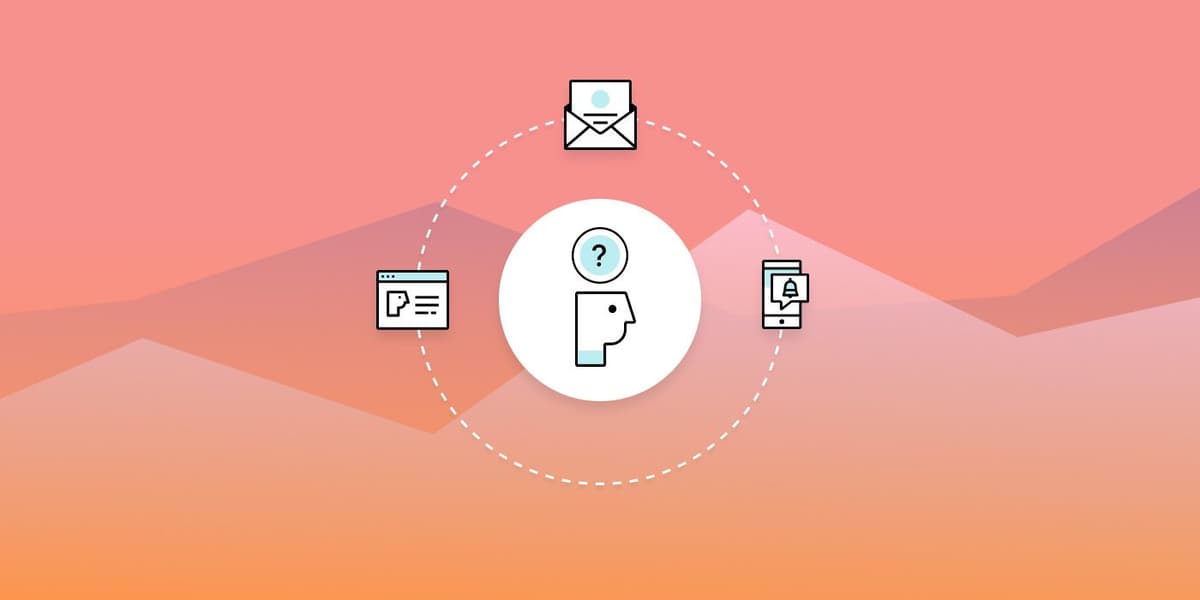Is Your Marketing Strategy Really Data-Driven?
Published on August 12, 2019/Last edited on August 12, 2019/6 min read


Jennifer Keck
CopywriterWe live in an era where Facebook knows you better than your mother. Yet marketers still struggle to collect and track data—let alone make meaningful decisions with it. From data silos to an ever-expanding list of metrics to keep track of, it’s no surprise that only a small minority of marketers currently feel able to offer their customer data-driven brand experiences.
You may be thinking, “We run analytics reports, perform A/B testing, and so on. That means our marketing strategy is data-driven.” Well, it may not be as data-driven as you think. You could be missing out on important information that could supercharge results. So how can you know if your strategy is data-driven? Let’s start by looking at the types of data most marketers collect, and how it can improve your marketing efforts.
Types of Marketing Data (and How to Use Them)
Web and Mobile App Analytics. You’ve no doubt spent months or even years tracking your app’s MAU and your website’s traffic volume, digging into where your customers come from, which pages they spend time on, and when they bounce or end a session. This kind of data opens up possibilities for deeper data dives—like day-by-day retention analysis—that give brands an important window into how their audiences are engaging with their main digital properties, both right now and over time
Email and Mobile Messaging Analytics. Direct customer messaging is one of the most powerful ways to interact with your audience. By leveraging email, push notifications, and other messaging channels, you can identify trends and metrics that will serve as your North Star as you iterate through variations of your messaging copy and marketing pressure. This A/B testing approach, when combined with a more granular streaming data source like Braze Currents, will allow you to deliver personalized outreach to your audience wherever they are—and nudge them to take a variety of actions, from visiting your website to buying something on your mobile app. Your open rates, click-through rates, conversion rates, and opt-out rates/unsubscribes offer a window into whether your messaging is successfully enticing customers to take that next step.
Social Media Analytics. Social media can serve as a sandbox for your marketing campaigns. It provides free and relatively-low cost opportunities to see how people engage with your content and which messaging drives web traffic and conversions. You’ll even find out how people feel about your brand via comments and reviews.
CRM Analytics. Your CRM system can show you the path prospects took to becoming customers and where others are going astray. Using your CRM system to understand when and why prospects drop off the funnel will help you improve your pipeline and engage in more focused targeting and segmentation. It’s also a great way to measure how much revenue your marketing efforts are bringing in.
Third-Party Data. From website visits to product purchases, third-party data offers invaluable insight into what your target audience is doing across the internet. By learning more about their interests and buying habits, you can better tailor your marketing strategy to their needs. One caveat: The last few years have seen a lot of new legislation that makes leveraging third-party data more complicated and raises potential compliance challenges—so make sure that you’re being thoughtful about this kind of information and how you’re sourcing and handling it.
Now, as infomercial king Billy Mays used to say, “But wait, there’s more.” Predictive data, intent data, IP resolution data, call tracking data…is your head swimming yet? Take a deep breath and remember, all of this has the same goal: to give you more clarity around your target audience and help you predict customer behavior. Your data should help you reach customers on the right channels with the right messaging at the right time, leading to stronger connections and higher conversion rates.
How to Evaluate Your Marketing Strategy
Your marketing team is collecting and analyzing data from all of the sources above (and maybe even more), you say? That means your strategy is truly data-driven, right? Not always. Unless you answer “yes” to the following questions, it may be time to dive deeper.
Have you set goals?
Seeing an uptick in web traffic or more likes on Facebook is always exciting. But are you reaching the right audience? Before you start tracking data, you need to set goals for all of your channels and campaigns. How you define success will help you determine how to adjust your strategy based on data.
Do you have a single customer view?
Data tends to get siloed, making it difficult to form a complete picture of customers’ behaviors.
Web and app analytics, email, push, social media, and customer relationship data is usually scattered across platforms, teams, and departments. To make matters worse, your marketing team may not even use all the data available— 60% to 73% of company data goes unused for analytics.
Fortunately, tools like Braze’s Currents can transfer data from multiple platforms to create a single interface that offers insights in real-time.
How fresh is your data?
Yes, it’s important to track trends over time. But today’s markers must act faster than ever to keep audiences engaged. Real-time data can make the difference between gaining or keeping loyal customers and losing them to a competitor.
Have you personalized your messaging?
Gone are the days of generic email blasts. Customers expect personalization. According to a poll conducted by Marketo, 79% of customers said they’re only likely to engage with a brand offer when its personalized to their prior interactions. And companies that use personalization see 5-8x the ROI on their marketing spend.
Are you prepared to change your strategy?
This one may seem like a no-brainer. Yet 84% of companies fail when it comes to a digital transformation because they aren’t prepared to change. A data management tool won’t do any good if you’re not willing and able to change your strategy based on your findings. So take a good look at how your team is using your data to inform your marketing decisions and actions. Are you running basic correlations, looking over a few descriptive rates, and calling it a day? Or are you going one step further to try and identify the core elements that make up the trends and patterns in your data, so that you can engage in more precise personalization and forge stronger brand relationships by truly understanding your users?
What to Do Next?
If your marketing strategy isn’t as data-driven as you thought—don’t worry. A great way to improve is to look to brands that are already doing it right. One compelling example? British food delivery brand Deliveroo, who successfully improved their use of customer information and democratized data access by leveraging Braze current and data visualization and analytics platform Looker.
Related Tags
Be Absolutely Engaging.™
Sign up for regular updates from Braze.
Related Content
View the Blog
The new inbox reality: How iOS changes are reshaping email marketing

Aparna Prasad

Experience optimization: Turning data insights into better journeys

Team Braze

December 2025 Bonfire Marketer of the Month: Jagex’s Emma Oliver
